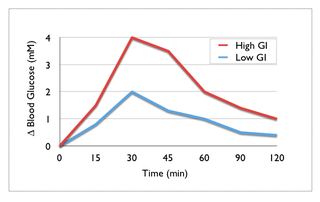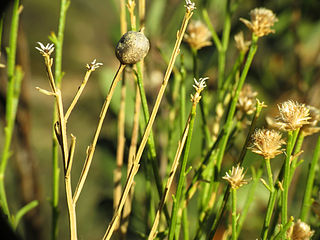
A test tube, also known as a culture tube or sample tube, is a common piece of laboratory glassware consisting of a finger-like length of glass or clear plastic tubing, open at the top and closed at the bottom.

Phlebotomy is the process of making a puncture in a vein usually in the arm, with a cannula, for the purpose of drawing blood. The procedure itself is known as a venipuncture, which is also used for intravenous therapy. A person who performs a phlebotomy is called a phlebotomist, although most doctors, nurses, and other technicians can also carry out a phlebotomy. In contrast, phlebectomy is the removal of a vein.

A vacutainer blood collection tube is a sterile glass or plastic test tube with a colored rubber stopper creating a vacuum seal inside of the tube, facilitating the drawing of a predetermined volume of liquid. Vacutainer tubes may contain additives designed to stabilize and preserve the specimen prior to analytical testing. Tubes are available with a safety-engineered stopper, with a variety of labeling options and draw volumes. The color of the top indicates the additives in the vial.

Arge pagana is a sawfly in the family Argidae. It is known by the name "large rose sawfly" although the related species Arge ochropus is also known by this name.

Plegadis is a bird genus in the family Threskiornithidae. The genus name derives from Ancient Greek plegados, "sickle", referring to the distinctive shape of the bill. Member species are found on every continent except Antarctica as well as a number of islands. The glossy ibis is easily the most widespread of the three species. Plegadis contains the following three species:

Aemilia is a genus of tiger moths in the family Erebidae described by William Forsell Kirby in 1892. It was initially named Ameles, but this name properly refers to a praying mantis genus.

A postprandial glucose (PPG) test is a blood glucose test that determines the amount of glucose, in the plasma after a meal. The diagnosis is typically restricted to postprandial hyperglycemia due to lack of strong evidence of co-relation with a diagnosis of diabetes.
Einfeldia is a genus of European non-biting midges in the subfamily Chironominae of the bloodworm family Chironomidae.

Nasi kuning, or sometimes called nasi kunyit, is an Indonesian fragrant rice dish cooked with coconut milk and turmeric, hence the name nasi kuning.
Gerandibis is an extinct genus of ibis known from fossil remains from early Miocene (Aquitanian) beds in France. It contains a single species, Gerandibis pagana, which was originally described by Milne-Edwards in 1868 as Ibis pagana. Richard Sharpe classified it in the genus Eudocimus, but Storrs L. Olson placed it in the genus Plegadis due to anatomical similarities closer to that genus. The ibises of the genus Plegadis have two natural foramina (holes) in the intertrochlear groove in the distal section of the tarsometatarsus, where as ibises of Eudocimus have one small foramen. P. paganus has two small holes akin to living species of Plegadis. The species was eventually made the type species of a separate genus Gerandibis by Vanesa L. De Pietri (2013).

Yellow rice is a traditional yellow-colored rice dish in Spanish, West Asian, Morocco, Peruvian, Caribbean, Portuguese, Filipino, Afghan, Indian, Sri Lankan, South African and Indonesian cuisines. It is made using white rice made yellow with annatto, saffron or turmeric, ingredients used to give the rice its yellow color.
Mallota bequaerti is a species of syrphid fly in the family Syrphidae.

Neopamera is a genus of dirt-colored seed bugs in the family Rhyparochromidae. There are about 16 described species in Neopamera.
Aneurus borealis is a species of flat bug in the family Aradidae. It is found in North America.
Gozmanyina majestus is a species of cosmochthoniid in the family Cosmochthoniidae.
Phloeosinus pini is a species of crenulate bark beetle in the family Curculionidae. It is found in North America.

Aciurina thoracica is a species of fruit fly in the family Tephritidae.
Triarius trivittatus is a species of skeletonizing leaf beetle in the family Chrysomelidae. It is found in North America.
Kuning, also spelled kyuning or kiyuning and Anglicized as yellow rice or turmeric rice, is a Filipino rice dish cooked with turmeric, lemongrass, salt, bay leaves, and other spices to taste. It originates from the island of Mindanao and is a staple food among the Maranao people of Lanao del Sur. It is related to the Indonesian nasi kuning of neighboring Sulawesi, but it does not use coconut milk. The dish is characteristically yellow because of the use of turmeric.
Liogluta pagana is a species of beetle belonging to the family Staphylinidae.









